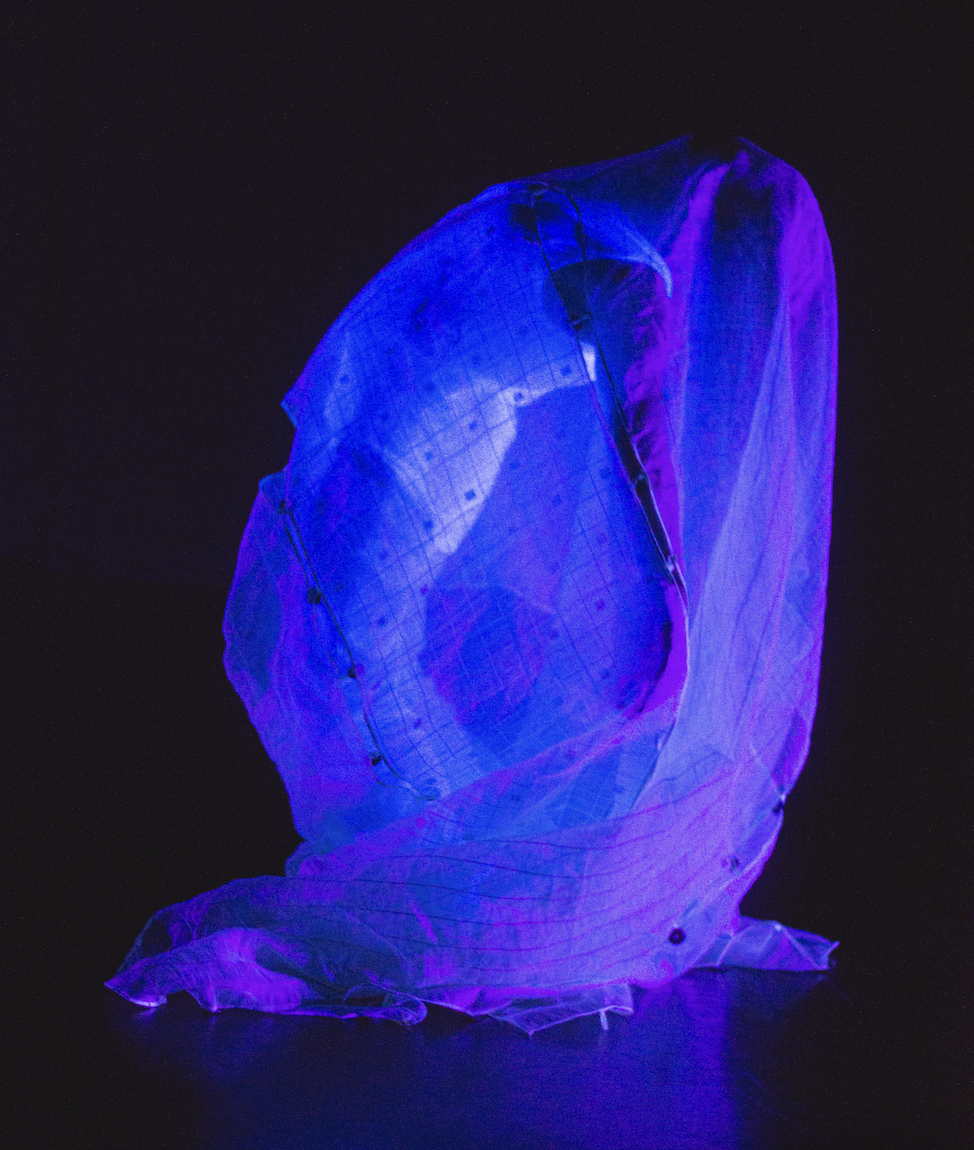Vancouver's Ralph Escamillan weaves together stories of the Philippine diaspora in new dance work, PIÑA
The ensemble piece takes its name from a traditional textile made of fibres from the leaves of pineapple plants
FakeKnot, PIÑA. Photo by Rydel Cerezo
SFU Woodward’s Cultural Programs and The Dance Centre present FakeKnot’s PIÑA from May 4 to 6 at 8 pm at SFU Goldcorp Centre for the Arts
DANCE ARTIST Ralph Escamillan remembers going to the Philippines’ birthplace of his mother as a teenager and being gifted his first barong tagalog, which translates to “Tagalog dress” or “outfit”, a long-sleeved formal shirt for men made of piña. The traditional and prized Philippine fabric is made from the leaves of pineapple plants through an intricate, multistep process. First, the leaves are scraped until their inner ivory-white threads are revealed; hand-knotted, the fibres are spun and woven into a translucent, stiff cloth, as delicate-looking as it is sturdy.
The peak of piña’s production took place during the late-18th and early-19th centuries under Spanish colonial rule, conquistadors having introduced the fruit to the island nation. Once reserved for the elite and priced accordingly, the material is often used in Filipiniana dress (or formal Philippine clothing). It has also been experiencing a resurgence in recent years, partly due to new uses in the fashion industry, partly out of cultural revival. For Escamillan, the artistic director of FakeKnot, this fabric—along with its complex, fascinating background and symbolism—formed the starting point for PIÑA. The new work for four Philippine performers incorporates design, traditional folk dance, contemporary choreography, and an original score by K!mmortal. Inspired by Escamillan’s identity as a first-generation Canadian-born Filipinx, PIÑA explores parallels between the diasporic experience and the cloth itself and looks at how the body carries history and ancestry.
“I wanted to learn more about my family lineage,” Escamillan tells Stir in a phone interview during a rehearsal break. “After going to the Philippines with my mom when I was younger, I noticed this familiar fabric, this sheer, cream textile, and I wanted to learn more about it. You always needed to have the barong for special occasions, but the pricing on it is insane, so from the beginning I was interested in this class aspect, in terms of access to this fabric.
“I was interested in the provenance of this material, and I wanted to keep pulling that thread: Where does this fabric come from? It has a colonial history; pineapple is not native to the Philippines. There is a lot of labour involved. There’s the delicacy of the fibre, but it is also really strong, much like diasporic people and their resilience.”
Ralph Escamillan.
To lean into the fabric’s historical dance context, Escamillan began exploring how piña was worn in certain folk styles. Specifically, the Maria Clara dances, named after the mestiza heroine in Noli Me Tángere, a novel by José Rizal, merged Spanish courtship conventions with Philippine costumes and props, such as bamboo castanets and Chinese fans.
“It really became an ethnocultural and anthropological journey,” Escamillan says of creating the work.
With Escamillan’s background in street, ballet, jazz, commercial, and contemporary dance, the artist also has a long-standing keen interest in fashion. As with other FakeKnot works, PIÑA uses costumes as tangible objects that lend thematic structure and narrative.
“I’m approaching the textile more as a set piece or another performer in the work,” Escamillan says, who designed the fabric pieces with Robyn Jill Laxamana.
In one section, piña is incorporated in innovative ways to illustrate rigodon, a traditional Philippine court dance used contemporarily as a coming of age “debut” dance and at weddings. The fabric is affixed to dancers’ bodies with bamboo, the modular structures reaching up to eight feet high. Sometimes the fabric restricts the dancers’ movements, resulting in a unique physical language. At other times, it is manipulated to form a wall that light bounces off, casting a glow onto performers Tin Gamboa, Justin Calvadores, Danah Rosales, and Escamillan, the gleam reflecting the material’s own luminosity.
“Clothing and fabric and textiles are the first entry point to understanding someone and who people are, or not understanding them, not knowing who they are,” Escamillan says. “It’s one of the places where people make choices on a daily basis. Also, on the aesthetic side for me and for my creation process, coming from such a multitude of dance forms, clothing and textile kind of funnel or narrow my physical possibilities, similar to the Bauhaus concept of making structures around you, and letting that inform the movement. I want to create structures around me for the dance to find itself.”
The background research for PIÑA has been extensive. Among the work’s collaborators are master piña weaver Carlo Eliserio; Philippine folk-dance mentor Peter Alcedo; Philippine textile historian Sandra Castro; Philippine textile conservationist Lenora Luisa Cabili; and Philippine dress historian Gino Gonzales. Escamillan connected with HABI: The Philippine Textile Council, hiring three families to make the fabric used in the work.
Escamillan’s company created the FakeKnot Learning Series (FKLS) with the aim of sharing its creative and research process with the public. Several webinars about piña are available for free on Vimeo, featuring experts and artisans from around the world. During PIÑA’s Vancouver run, satellite events will take place as part of this educational outreach. A free panel discussion on Philippine dance-making with Alvin Erasga Tolentino, Antonio Somera, and Denisa Reyes, moderated by Escamillan, takes place April 30 at The Dance Centre’s Faris Family Theatre. (It’s from 5 to 6:30 pm.) Two modest exhibits (with piña fibres, historical and modern garments, and more) will also be set up: one at The Scotiabank Dance Centre (beginning May 1) and one at SFU Woodward’s (as of May 2). The project is especially timely, Escamillan notes, with calls from B.C.’s Filipinx community for the provincial government to follow through on its promise to build a long-awaited cultural centre.














